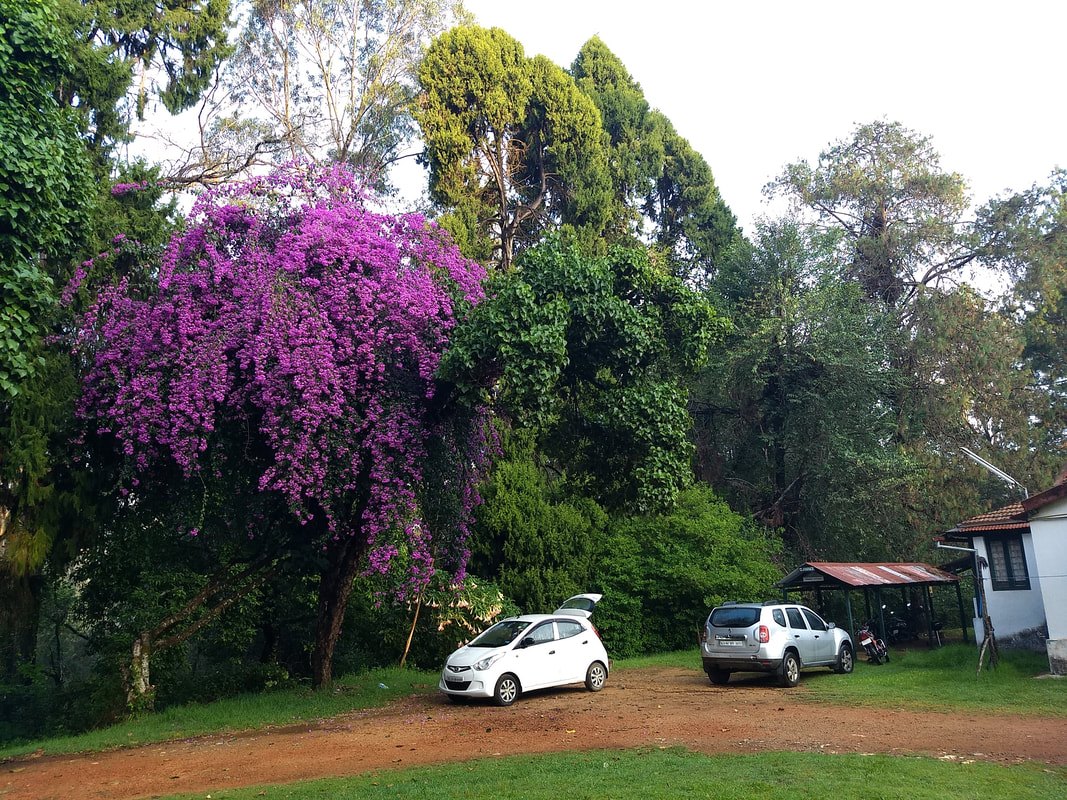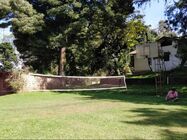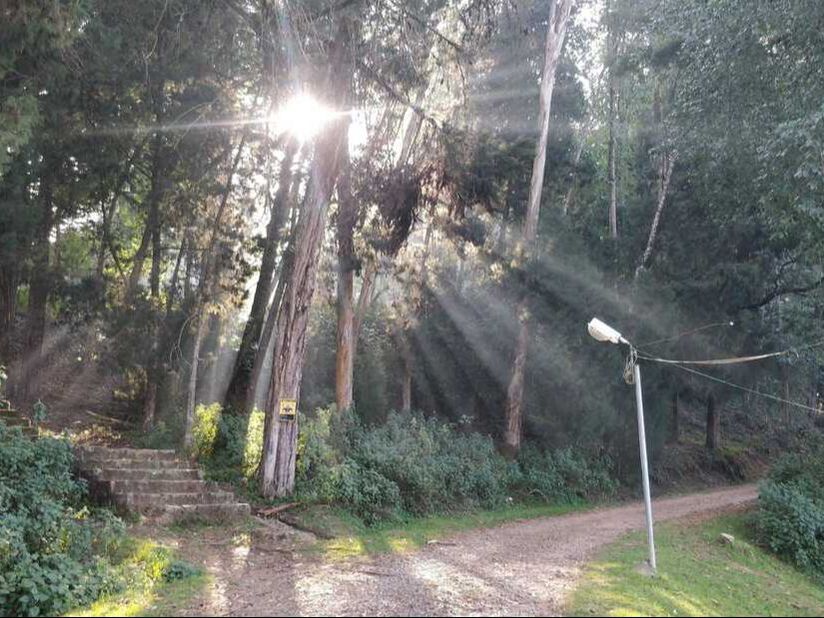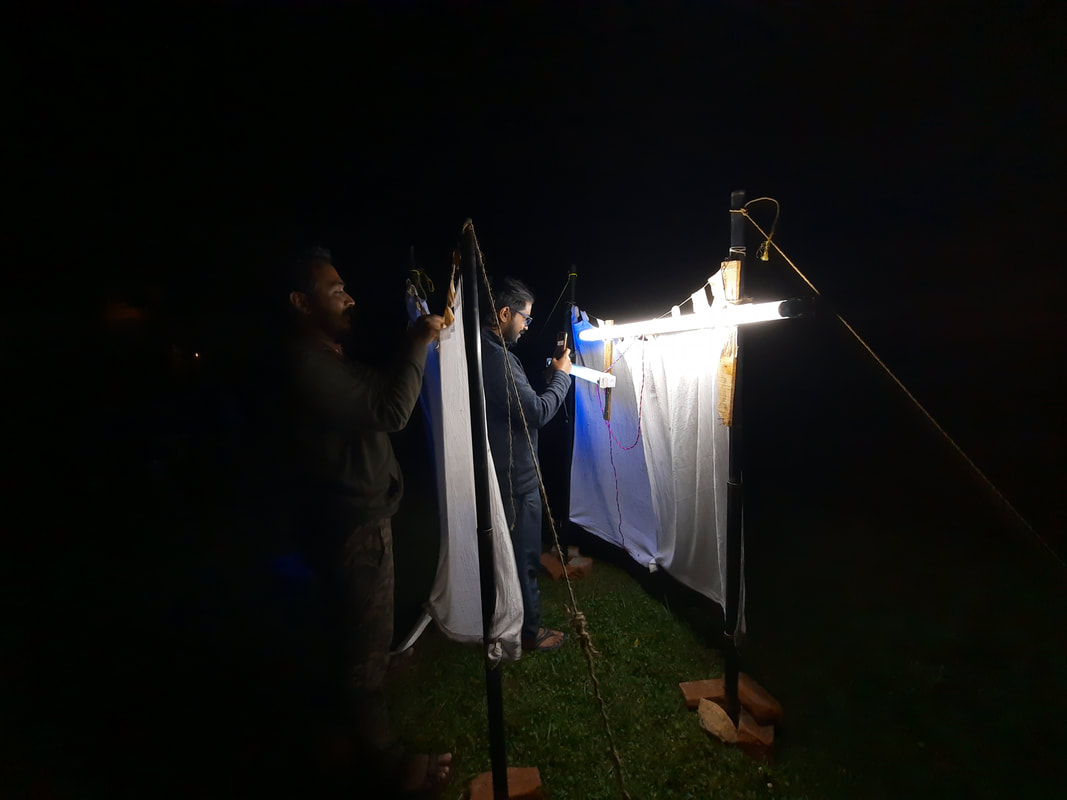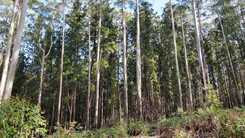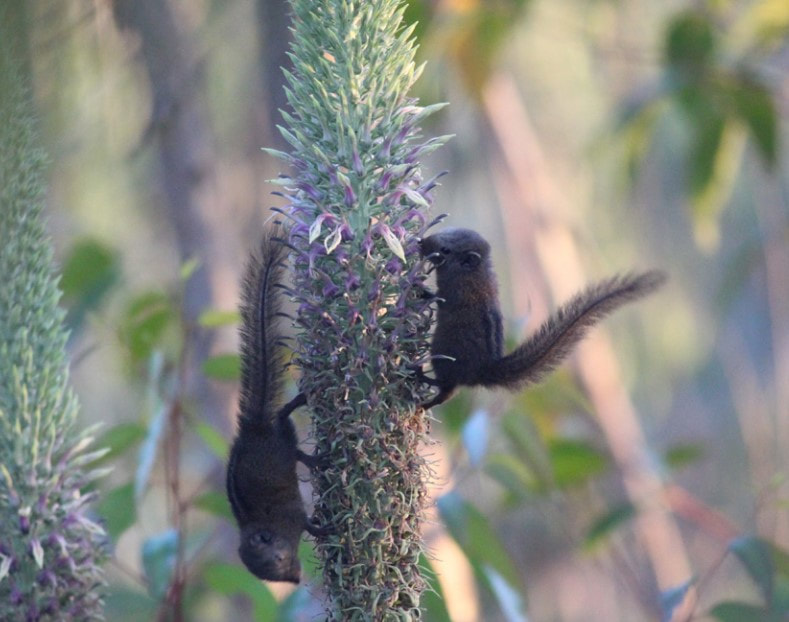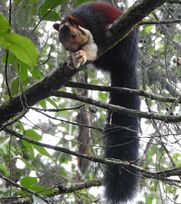Why a field station in the Shola Sky Islands?
|
The Sky Islands in the Shola habitats of the Western Ghats are isolated montane ecosystems. Recent research, some from our group at IISER Tirupati, shows several species isolated, and endemic to specific mountains. Such a system of isolated mountains with a set of restricted species forms a great natural laboratory to understand various biological phenomena - how and why do some species live on these mountains? How does climate change impact their lives?
Similar questions are being explored on different mountain systems of the world with a significant amount of field research combined with modern science (e.g. Rocky Mountain Biological field station). Although the Western Ghats are some of the best-studied landscapes in India, we still know very little about the biology of several species. Even some of the common birds here, the Sholakilli had less than 100 sighting records globally (in 2000, before our detailed studies). One of the fascinating elements of the Shola Sky Islands endemics is that several of the species, though globally endemic, and several are endangered, seem to be fairly common in mild human-use areas - even kitchen gardens and backyards. This provides us with a great opportunity to live here, while exploring the lives of these animals at close proximity - akin to being able to live in a zoo, an aviary, or a laboratory (not exactly!) Field stations are a critical link to biological research in the wild. Stations like RMBL (linked above) have run since 1928 and have provided immense insights into how the world works, with implications for science, policy. and education (see video). Field stations permit long-term field data collection, and such data can in turn help answer questions like climate change. Scientists from other parts of the world also find this to be true, for examples, see a description from Australia. In India the set of field stations from Indian Institute of Science has led the way. There are more recent stations established by NCBS, and Madras Crocodile Bank (ARRS in Agumbe, and ANET in Andamans), and RAMBLE, a multi-institutional station in the Banni Grasslands. IISER-KIS Bombay Shola field station provides a unique opportunity to study the Shola species over the long term, examining impacts of climate change and landscape change on biodiversity. The facility will encourage researchers while also providing outreach and science-engagement opportunities for younger students. This was set up in 2018 through a collaboration with scientists from IISER Tirupati (Robin Vijayan and Nandini Rajamani) and Kodaikanal International School |
RESEARCH AT THE STATION:
Having several sky island species around the station implies that we get a very deep understanding of the lives of several of the organisms around us. Over the years several rare, endemic birds have nested around us, and some even on the field station walls. All of it permits for fascinating natural history observations, that eventually lead to more refined scientific questions.
ONGOING Projects:
Bird Lab Projects
Lab lead - V. V. Robin (Vijayan)
|
|
|
|
|
|
SCIURID LAB Projects
Lab lead - Nandini Rajamani
|
|
|
|
|
NATURAL HISTORY PROJECTS:
- Biodiversity of KIS Clavarack Campus: This project comprises an ongoing collection of data compiled by all the visiting students at Clavarack in KIS. A few key covered areas are: a) Checklist of birds from Bombay Shola/ Clavarack campus. b) Documentation of herpetofauna (frogs and snakes from campus). c) Documentation of small mammals (squirrel, leopard cat etc also via camera traps). d) Other fauna including arthropods, fungus, flatworms etc. Photos
- Nesting behaviour of the White-bellied Sholakili: This project currently focuses on a colour-banded pair of Sholakili nesting close to Clavarack and monitored using camera traps. The study aims to gather first-hand information on this species which has previously not been recorded. We are collating data on nesting behaviour pre-and during incubation as well as documenting the parental provisioning behaviour after hatching. This project aims to give a glimpse into the breeding activity and add to the life history observations of this species. We hope to expand these observations to include more pairs over the years.
- Bird Calling and Cicada activity in Bombay Shola: The cicadas are insects in the order Hemiptera (true bugs), found all around the world in temperate to tropical climates. Most cicadas are cryptic. They produce exceptionally loud songs mostly during the hot hours of summer. Cicadas are thought to be the loudest insects in the world. Often these loud vocalizations mask the bird calling activity in the Cicada habitats. Here we aim to understand how Cicada vocalizations affect bird calling activity in the Shola Sky Islands of the Western ghats. We have deployed two autonomous recorder units in various forests for a full year July 2018-June 2019, which is being analysed to spot patterns.
Capacity building at the field station
As part of our commitment to use the facility to train the next generation of ecologists, we have started an internship program. Late stage school students and early undergraduate students are the target audience.
We select students for the 10-week internship after interviewing several applicants for ecological research motivations. All the students are initially exposed to three components of research - behaviour, acoustics, GIS and Remote Sensing, each for a week. During the first few weeks, students are exposed to one theme each week, including theory, research papers discussions, and learning methods of field data collection on the same themes. After three weeks, students select one stream of research to collect detailed field data through a short project. At the end of the internship students conducted analyses of the data they collect and make short presentations. Many intern projects so far have provided novel insights into the natural history of several bird species and can possibly segue into larger projects.
The field station can support up to 20 students at a time.
We have also had six school students intern with us for online research projects in 2021.
We select students for the 10-week internship after interviewing several applicants for ecological research motivations. All the students are initially exposed to three components of research - behaviour, acoustics, GIS and Remote Sensing, each for a week. During the first few weeks, students are exposed to one theme each week, including theory, research papers discussions, and learning methods of field data collection on the same themes. After three weeks, students select one stream of research to collect detailed field data through a short project. At the end of the internship students conducted analyses of the data they collect and make short presentations. Many intern projects so far have provided novel insights into the natural history of several bird species and can possibly segue into larger projects.
The field station can support up to 20 students at a time.
We have also had six school students intern with us for online research projects in 2021.
Future Directions:
In the future, we see the IISER-KIS field station as a base to house research that provides key insights into aspects like climate change and related biotic change. We hope to understand the behaviour and habitat requirements of some endangered taxa. Some of this research, we hope, will influence policy - on the restoration of Shola, and the conservation of the landscape. We also hope to host a number of undergraduate students from different parts of India, offering them field internships, thus building capacity in conducting high-quality field research. Research and education will thus go hand-in-hand, while we will also invite researchers from other institutes to conduct research while based here.


